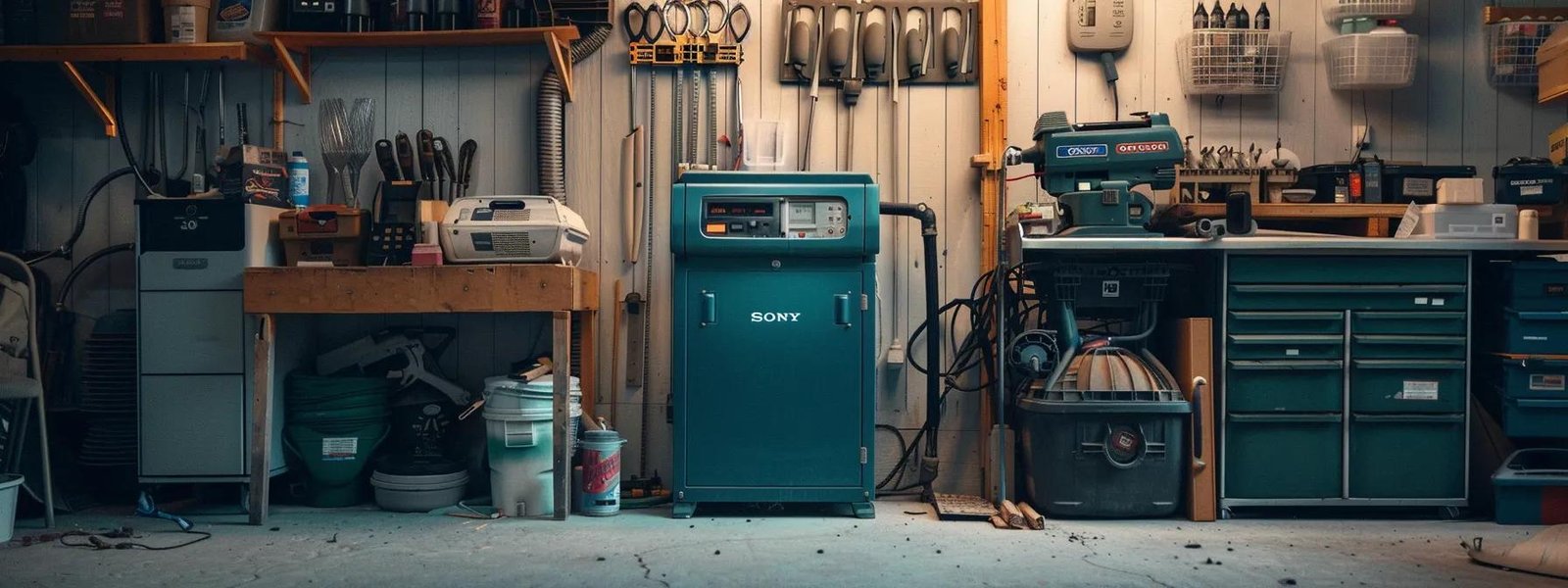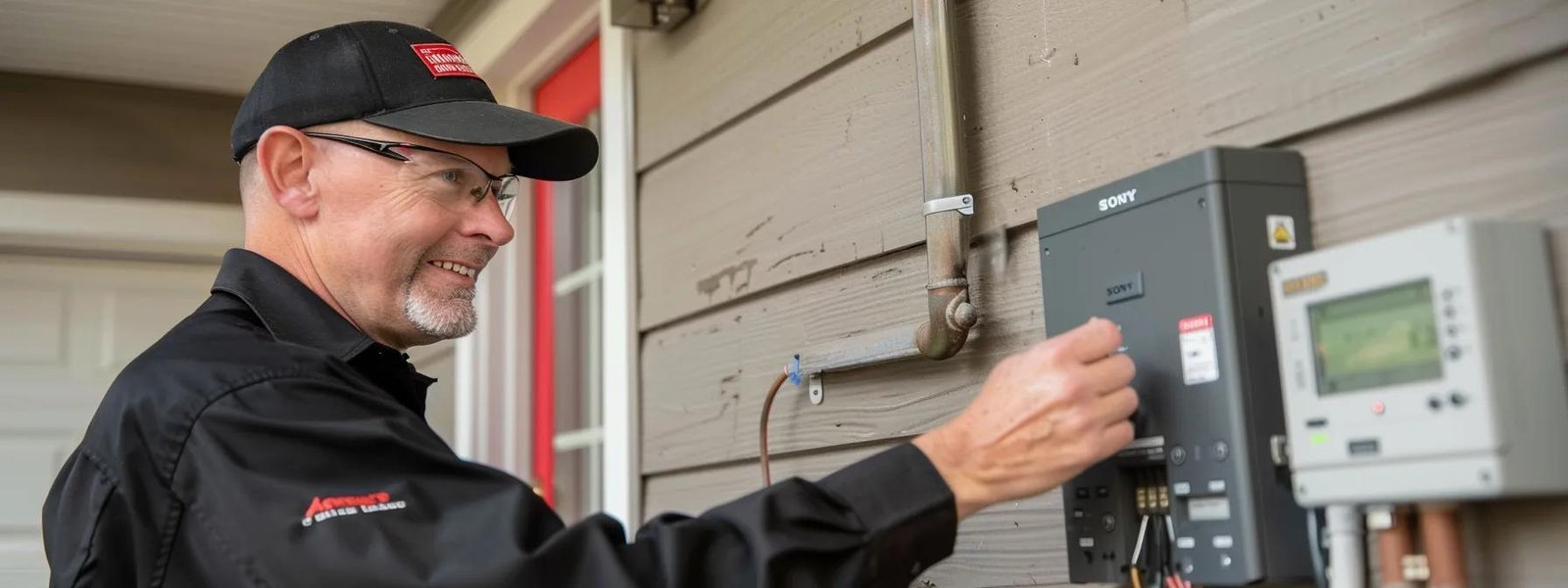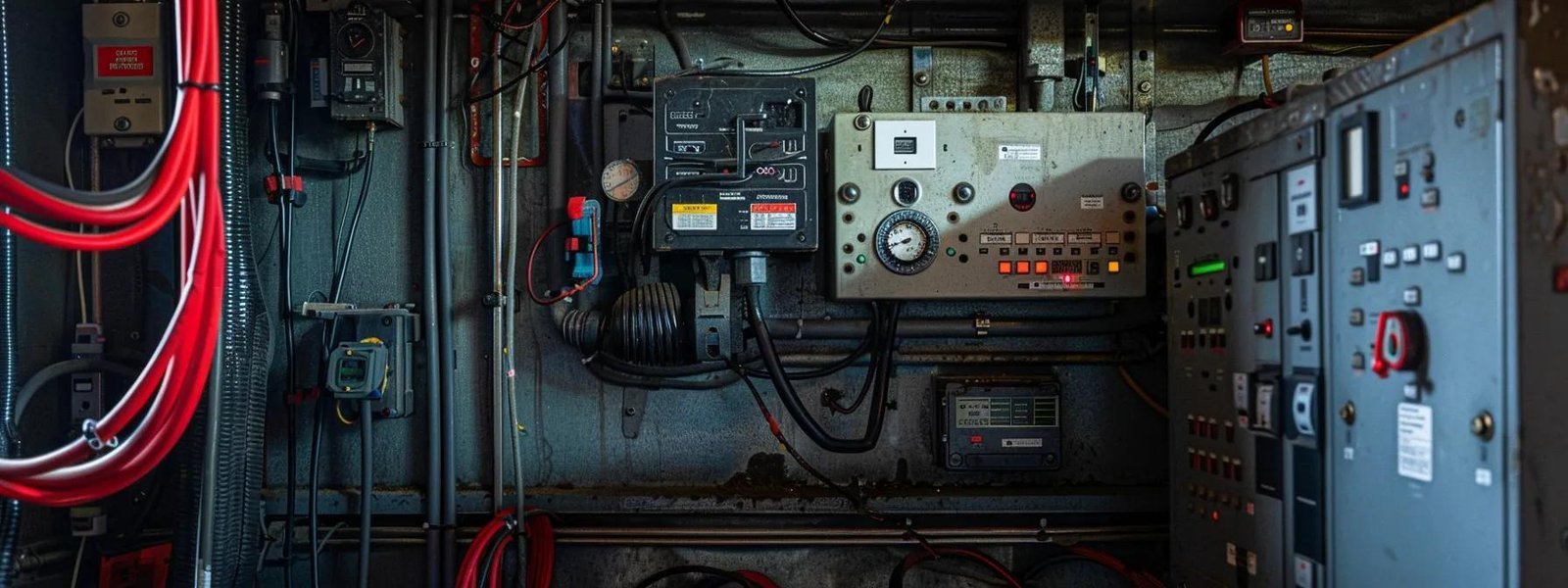
When the power goes out, having a reliable home generator can make all the difference. This guide will walk homeowners through the essential steps for setting up a generator, including determining the appropriate generator size and choosing the right fuel source, whether it’s a diesel generator or propane. By following these steps, readers will ensure their homes remain powered during outages, providing peace of mind and security. This content addresses the common concern of power loss and offers practical solutions to keep homes running smoothly.

To determine the appropriate generator size for a home, homeowners should start by listing essential appliances and devices that require power during an emergency. Next, calculating total power requirements in watts is crucial, along with understanding the difference between starting wattage and running wattage. Finally, consulting a professional for sizing recommendations and electrical diagnostics ensures that the electrical wiring is adequate and that the generator meets warranty standards. This process will help homeowners make informed decisions about using diesel fuel and ensure reliable power when needed.
Homeowners should begin by identifying essential appliances and devices that will need power during an outage. This includes items such as refrigerators, heating systems, and medical equipment, which are critical for safety and comfort. By creating a comprehensive list, homeowners can better understand their power needs and ensure that their standby generator is adequately sized to handle the load without creating a hazard, such as carbon monoxide buildup from improper ventilation.
Calculating total power requirements in watts is a critical step in selecting the right generator for a home. Homeowners should add the starting wattage of all essential appliances and devices identified earlier, as this figure represents the initial power needed to start these items. It is also important to consider the running wattage, which is the power required to keep the appliances operating after they have started. This calculation ensures that the generator can handle the load effectively, preventing issues such as overloading the electrical cable or causing the transfer switch to fail during operation.
Understanding the difference between starting wattage and running wattage is essential for selecting the right generator size for a home. Starting wattage refers to the initial power required to start appliances like a sump pump or refrigerator, while running wattage is the continuous power needed to keep these devices operating. Homeowners must consider these factors to avoid risks such as overloading the generator, which can lead to safety hazards, including carbon monoxide buildup, and ensure compliance with local building codes for safe operation.
Consulting a professional for generator sizing recommendations is a vital step in ensuring safety and efficiency in a home’s backup power supply. An expert can assess the specific power needs of essential appliances, taking into account factors such as starting wattage and the capacity of the fuel tank. They can also provide insights on maintenance, including the importance of checking the spark plug and other components, to ensure the generator operates reliably during an outage.

Choosing the right type of generator fuel source is crucial for effective home power management during a power outage. Homeowners should evaluate the pros and cons of gasoline generators, consider diesel generators for longer runtime, and understand the benefits of propane generators. Additionally, looking into natural gas generators offers convenience, while decisions should be based on fuel availability and cost. Each option has unique advantages that can impact overall performance and safety, making it essential to consult an electrician for proper inspection and setup.
Gasoline generators are a popular choice for homeowners due to their availability and ease of use. They provide a reliable power source for essential appliances during outages, but they also come with drawbacks. One significant concern is the risk of carbon monoxide poisoning, which can occur if the generator is not placed in a well-ventilated area. Additionally, troubleshooting issues can arise with gasoline generators, such as fuel quality and maintenance needs, which may require expertise. Brands like Cummins offer power inverters that can enhance efficiency, but understanding the pros and cons is crucial for making an informed decision about the best generator for home use.
Diesel generators are an excellent choice for homeowners seeking longer runtime during power outages. They typically offer greater fuel efficiency compared to gasoline generators, allowing for extended operation without frequent refueling. When considering a diesel generator, it is essential to ensure proper ventilation to prevent carbon monoxide buildup and to check the gas meter and circuit breaker for compatibility with the generator’s output. Brands like Generac provide reliable options that can meet the power demands of essential appliances while maintaining safety standards.
Propane generators offer several advantages that make them an appealing choice for homeowners. They produce lower carbon emissions compared to gasoline generators, contributing to better air quality and fire safety. Additionally, propane generators operate more quietly, making them suitable for residential areas where noise can be a concern, especially during power outages when air conditioning and other essential systems are in use. Their connection to a pipeline can also provide a continuous fuel supply, reducing the need for frequent refueling and enhancing convenience during extended outages:
Natural gas generators provide a convenient solution for homeowners seeking reliable electric power during outages. These generators connect directly to the existing gas supply, eliminating the need for a separate fuel tank and reducing the hassle of refueling. With the ability to deliver consistent voltage, natural gas generators can seamlessly integrate with the electrical grid, ensuring that essential appliances remain operational without interruption.
When deciding on a generator, homeowners should consider fuel availability and cost to ensure a practical and economical choice. For instance, if natural gas is readily accessible, a natural gas generator may be the best option, as it connects directly to the home’s existing supply, eliminating the need for additional fuel storage. Additionally, understanding the costs associated with different fuel types, such as gasoline or diesel, can help homeowners budget for both the initial generator installation and ongoing fuel expenses, ensuring that the selected generator meets their power needs without exceeding their financial limits.

Selecting a safe installation site for a generator is crucial for optimal performance and safety. Homeowners should choose an outdoor location that complies with local regulations, ensuring adequate ventilation around the generator. It is also important to install the generator on a stable and level surface while maintaining a safe distance from doors and windows to prevent hazards. Each of these factors plays a vital role in creating a secure environment for the generator’s operation.
Selecting an outdoor location for a generator is essential for compliance with local regulations and ensuring safe operation. Homeowners should position the generator at least 5 to 10 feet away from windows, doors, and vents to prevent carbon monoxide from entering the home. Additionally, checking local codes can provide specific requirements regarding distance from property lines and other structures, ensuring that the installation meets safety standards and operates efficiently.
Ensuring adequate ventilation around the generator is essential for safe operation and preventing carbon monoxide buildup. Homeowners should position the generator in an open area, away from walls, fences, and other structures that could obstruct airflow. This practice not only enhances the generator’s performance but also protects the home and its occupants from potential hazards associated with exhaust fumes.
Installing a generator on a stable and level surface is crucial for its safe and efficient operation. A solid foundation helps prevent vibrations that can lead to mechanical issues and ensures that the generator remains securely in place during use. Homeowners should consider using concrete pads or gravel to create a stable base, as these materials provide excellent support and drainage, reducing the risk of water damage and enhancing the longevity of the generator.
Keeping a safe distance from doors and windows is essential when installing a generator to prevent carbon monoxide from entering the home. Homeowners should position the generator at least 5 to 10 feet away from these openings to ensure that exhaust fumes do not pose a health risk. This precaution not only enhances safety but also complies with local regulations, providing peace of mind during power outages.

Before installing the transfer switch to your home’s electrical panel, it is essential to shut off power to ensure safety. The transfer switch should be mounted near the electrical panel for easy access. Proper wiring connections are crucial for functionality, followed by a safe test of the transfer switch operation. Homeowners may also consider hiring a licensed electrician for expert assistance.
Before starting the installation of the transfer switch to your home’s electrical panel, it is crucial to shut off the power. This step ensures the safety of the homeowner and anyone assisting with the installation, preventing electrical shocks or accidents. By turning off the main power supply, homeowners can work confidently, knowing that they are minimizing risks while connecting the generator to the electrical system.
Mounting the transfer switch near the electrical panel is a critical step in the generator installation process. This location allows for easy access and efficient wiring connections, ensuring that the generator can quickly supply power to essential circuits during an outage. Proper placement not only enhances the functionality of the system but also complies with safety standards, reducing the risk of electrical hazards and ensuring reliable operation when it is needed most.
Connecting the transfer switch wiring correctly is essential for ensuring safe and efficient operation of the generator system. Homeowners should follow the manufacturer’s instructions closely, ensuring that each wire is connected to the appropriate terminal on the transfer switch and the electrical panel. This attention to detail not only prevents potential electrical hazards but also guarantees that the generator can seamlessly supply power to essential circuits during an outage, providing peace of mind when it is needed most.
Testing the transfer switch operation safely is a crucial step in ensuring that the generator system functions correctly during a power outage. Homeowners should follow the manufacturer’s guidelines to perform a test, which typically involves simulating a power failure by turning off the main power supply. This process allows the homeowner to verify that the generator activates and supplies power to the designated circuits without any issues, ensuring peace of mind and reliability when it is needed most.
Hiring a licensed electrician for the installation of a transfer switch is a wise decision for homeowners. Professionals possess the expertise to ensure that the wiring is correctly connected and compliant with local codes, minimizing the risk of electrical hazards. This not only enhances safety but also guarantees that the generator will function properly during a power outage, providing peace of mind when it is needed most:

Connecting the generator to the transfer switch properly is essential for safe and efficient operation. Homeowners should use the recommended power cord for connection, ensuring all connections are secure to avoid hazards. Following the manufacturer’s guidelines for setup, checking for proper grounding of the generator, and verifying that circuit breakers are in the correct position are crucial steps to ensure a reliable power supply during outages.
Using the recommended power cord for connecting the generator to the transfer switch is essential for ensuring safe and efficient operation. Homeowners should always refer to the generator’s manual to identify the appropriate cord specifications, as using an incorrect or substandard cord can lead to overheating or electrical hazards. Properly securing all connections not only enhances safety but also guarantees a reliable power supply during outages:
Securing all connections when connecting the generator to the transfer switch is vital for preventing electrical hazards. Homeowners should ensure that each connection is tight and free from corrosion, as loose or damaged connections can lead to overheating and potential fire risks. Regularly inspecting these connections and using high-quality, compatible components will enhance safety and reliability during power outages:
Following the manufacturer’s guidelines for setup is crucial when connecting a generator to the transfer switch. These guidelines provide specific instructions on wiring, grounding, and safety measures that ensure the generator operates efficiently and safely. By adhering to these recommendations, homeowners can avoid potential hazards and ensure that their backup power system functions reliably during outages, ultimately protecting their home and family.
Checking for proper grounding of the generator is a critical step in ensuring safe operation. A well-grounded generator helps prevent electrical shocks and reduces the risk of damage to the equipment. Homeowners should connect the generator to a grounding rod or use the grounding terminal provided by the manufacturer, ensuring that all connections are secure and compliant with local electrical codes:
Verifying that circuit breakers are in the correct position is a crucial step in connecting the generator to the transfer switch. Homeowners should ensure that the main circuit breaker is turned off before activating the generator, as this prevents backfeeding into the electrical grid, which can pose serious safety risks. Additionally, checking that the breakers for the circuits being powered by the generator are in the off position will help avoid overloads and ensure a smooth transition to backup power when needed.

Performing an initial test run of the generator is essential to ensure it operates correctly. Homeowners should schedule regular maintenance checks, replace filters and oil as recommended, and keep fuel fresh while storing it safely. Additionally, running the generator periodically helps confirm its functionality, providing peace of mind that it will be ready when needed most.
Performing an initial test run of the generator is a critical step in ensuring its reliability and functionality. Homeowners should follow the manufacturer’s instructions to start the generator, allowing it to run for a short period while monitoring its performance. This test helps identify any potential issues, ensuring that the generator is ready to provide power during an outage when it is needed most:
Scheduling regular maintenance checks for a home generator is essential to ensure its reliability and performance during power outages. Homeowners should plan these checks at least twice a year, focusing on tasks such as changing the oil, replacing filters, and inspecting the fuel system. By adhering to a maintenance schedule, homeowners can identify potential issues early, ensuring that their generator operates smoothly and is ready to provide power when needed most.
Replacing filters and oil as recommended is vital for maintaining the reliability of a home generator. Regularly changing the oil ensures that the engine runs smoothly and efficiently, while clean filters prevent dirt and debris from entering the system, which can lead to performance issues. Homeowners should consult the generator’s manual for specific maintenance schedules and follow these guidelines to extend the life of their generator and ensure it operates effectively during power outages.
Keeping fuel fresh and storing it safely is essential for the reliable operation of a home generator. Homeowners should use fuel stabilizers to extend the life of gasoline, preventing degradation that can lead to engine problems. Additionally, storing fuel in approved containers away from direct sunlight and heat sources minimizes the risk of fire hazards and ensures that the generator is ready to perform when needed most.
Running the generator periodically is essential for ensuring its functionality and reliability during power outages. Homeowners should aim to operate the generator for at least 30 minutes every month, allowing it to reach its optimal operating temperature and preventing fuel degradation. This practice not only helps identify any potential issues early but also keeps the generator ready for immediate use when needed most.
Setting up an essential home generator is crucial for ensuring reliable power during outages. Homeowners must carefully assess their power needs, select the appropriate generator size, and choose a suitable fuel source to enhance efficiency and safety. Proper installation and regular maintenance are vital to prevent hazards and ensure the generator operates effectively when needed. By following these steps, homeowners can secure peace of mind and protect their families from unexpected power disruptions.


